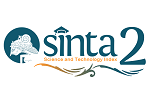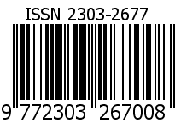Komunitas SLiMS Semarang sebagai ruang inovasi pustakawan
Abstract
Keywords
Full Text:
PDFReferences
Abou-Setta, A. (2015). Revisiting communities of practice – the case of Egyptian graffitists. Higher Education, Skills and Work-Based Learning, 5(2), 135–151. https://doi.org/10.1108/HESWBL-02-2014-0005
Arazy, O., Gellatly, I., Brainin, E., & Nov, O. (2015). Motivation to share knowledge using wiki technology and the moderating effect of role perceptions. Journal of the Association for Information Science and Technology, 67(10), 2362–2378. https://doi.org/10.1002/asi.23579
Bardon, T., & Borzillo, S. (2016). Communities of practice: Control or autonomy? Journal of Business Strategy, 37(1), 11–18. https://doi.org/10.1108/JBS-02-2015-0018
Borzillo, S., & Kaminska-Labbé, R. (2011). Unraveling the dynamics of knowledge creation in communities of practice through complexity theory lenses. Knowledge Management Research and Practice, 9(4), 353–366. https://doi.org/10.1057/kmrp.2011.13
Britt, V. G., & Paulus, T. (2016). Beyond the four walls of my building”: A Case study of #Edchat as a community of practice. American Journal of Distance Education, 30(1), 48–59. https://doi.org/10.1080/08923647.2016.1119609
Hadari, N. (2012). Metode penelitian bidang sosial. Yogyakarta: UGM Press.
Heriyanto. (2018). Thematic analysis sebagai metode menganalisa data untuk penelitian kualitatif. Anuva: Jurnal Kajian Budaya, Perpustakaan, Dan Informasi, 2(3), 317–324. https://doi.org/10.14710/anuva.2.3.317-324
Holmes, K., Greenhill, A., & McLean, R. (2014). Creating communities: The use of technology in craft and DIY communities of practice. Journal of Systems and Information Technology, 16(4), 277–295. https://doi.org/10.1108/JSIT-05-2013-0018
Jeon, S., Kim, Y., & Koh, J. (2011). An integrative model for knowledge sharing in communities of practice. Journal of Knowledge Management, 15(2), 251–269. https://doi.org/10.1108/13673271111119682
Longo, M. C., & Narduzzo, A. (2017). Transactive knowledge from communities of practice to firms: An Empirical investigation of innovative projects performance. European Journal of Innovation Management, 20(2), 291–311. https://doi.org/10.1108/EJIM-10-2016-0098
Mohajan, H. K. (2017). Roles of communities of practice for the development of the society. Journal of Economic Development, Environment and People, 6(3), 27–46. Retrieved from http://ojs.spiruharet.ro/index.php/jedep/article/view/63174/pdf
Moleong, L. J. (2017). Metodologi penelitian kualitatif. Bandung: Remaja Rosdakarya.
Nemec, P. B., & LaMaster, S. (2014). Education and training column: Communities of practice. Psychiatric Rehabilitation Journal, 37(4), 336–338. https://doi.org/10.1037/prj0000081
Page, R., Hynes, F., & Reed, J. (2018). Distance is not a barrier: The Use of videoconferencing to develop a community of practice. The Journal of Mental Health Training, Education and Practice, 14(1), 12–19. https://doi.org/10.1108/JMHTEP-10-2016-0052
Philpott, E., & Pike, D. (2013). Virtual-team-community-of-practice (VTCoP) theory can inform online course delivery. Journal of Applied Research in Higher Education, 5(2), 222–238. https://doi.org/10.1108/JARHE-11-2012-0033
Ranmuthugala, G., Plumb, J. J., Cunningham, F. C., Georgiou, A., Westbrook, J. I., & Braithwaite, J. (2011). How and why are communities of practice established in the healthcare sector? A systematic review of the literature. BMC Health Services Research, 11(273), 1–16. Retrieved from https://bmchealthservres.biomedcentral.com/track/pdf/10.1186/1472-6963-11-273.pdf
Retna, K. S. (2011). Communities of practice: Dynamics and success factors. Human Resource Management International Digest, 19(4), 41–60. https://doi.org/10.1108/hrmid.2011.04419daa.008
Sánchez-Cardona, I., Sánchez-Lugo, J., & VŽlez-González, J. (2012). Exploring the potential of communities of practice for learning and collaboration in a higher education context. Procedia: Social and Behavioral Sciences, 46(16), 1820–1825. https://doi.org/10.1016/j.sbspro.2012.05.385
Sugiyono. (2016). Metode penelitian kuantitatif, kualitatif dan R & D. Bandung: Alfabeta.
Wang, J., Zhang, R., Hao, J.-X., & Chen, X. (2019). Motivation factors of knowledge collaboration in virtual communities of practice: A Perspective from system dynamics. Journal of Knowledge Management, 23(3), 466–488. https://doi.org/10.1108/JKM-02-2018-0061
Wenger-Trayner, E., & Wenger-Trayner, B. (2015). Communities of practice a brief introduction. Wenger-Trayner.Com. Retrieved from https://wenger-trayner.com/wp-content/uploads/2015/04/07-Brief-introduction-to-communities-of-practice.pdf
Widodo, O. C. (2016). Efektifitas penggunaan software open source (SLiMS) pada perpustakaan perguruan tinggi di Malang. Libri-Net, 6(1), 5–6. Retrieved from http://journal.unair.ac.id/download-fullpapers-lncd09f5046afull.pdf
DOI: https://doi.org/10.24198/jkip.v8i2.23482
Refbacks
- There are currently no refbacks.
Copyright (c) 2020 Jurnal Kajian Informasi & Perpustakaan

This work is licensed under a Creative Commons Attribution-ShareAlike 4.0 International License.
Jurnal Kajian Informasi & Perpustakaan Indexed by:
Jurnal Kajian Informasi & Perpustakaan
Program Studi Perpustakaan dan Sains Informasi d.h. Program Studi Ilmu Perpustakaan
Fakultas Ilmu Komunikasi, Universitas Padjadjaran
Jl. Raya Bandung-Sumedang Km. 21 Jatinangor, Sumedang, Indonesia 45363
WA: +62 813-1323-7581 (Chat Only)
Telepon: +62227796954
Faksimile: +62227794122
email: jkip.fikom@unpad.ac.id
Jurnal Kajian Informasi & Perpustakaan is licensed under a Creative Commons Attribution-ShareAlike 4.0 International License
Jurnal Kajian Informasi & Perpustakaan supervised by:












2.png)
.png)



